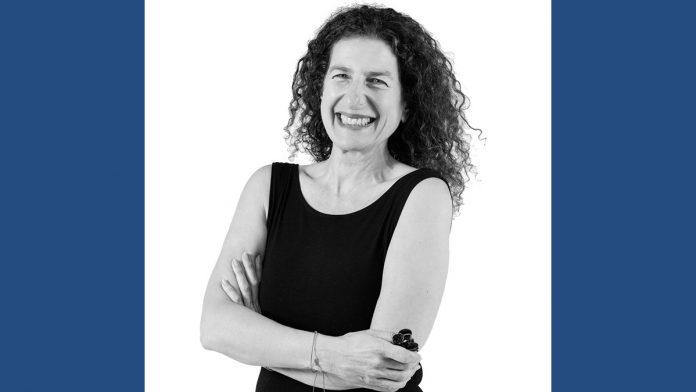Cathy Abraham was born in 1968 in Cape Town, where she currently lives and works. She specialised in process-based art at the Michaelis School of Fine Arts, University of Cape Town (UCT), where she graduated with a Masters degree in Fine Art with Distinction in 2018.
In her art practice, Abraham works systematically to unlock surface meaning in the search for a deeper understanding of the purpose of the everyday. Using repetitive processes and a system of numbers connected to the Kabbalah, she constantly questions the boundaries between reality and illusion. Abraham’s practice is grounded in her belief in the links between art and science; spiritual practice and reincarnation; and the search for ways of shifting perspectives. Her work challenges notions of time and space.
Abraham’s creative work brings together seemingly disparate entities through participation and a ritual-based practice. She uses mediums that reflect the subject matter which include film, mixed media, installation and participation as well as painting and sculpture.
As a child, I was told that my struggle with breath, with asthma, was nothing but psychosomatic.
I have used breath and captured it in balloons designating it as both subject and material. A consequence of my asthma is my compromised ability to blow up a balloon, and for this reason I have chosen balloons as the measure of my breathing capacity. I use breath to manifest the unseen implications of trauma within and without the body.
The bronzed exhales are cast from a daily practice of a square breath meditation. Thirteen breaths exhaled into balloons captured the five minute breathing cycle. Each balloon is cast in bronze with a matt black patina. Making solid what was previously airy, giving weight to the previously insubstantial, they are transformed from the inconsequential to the substantial. The heaviness of the bronze mass is a manifestation of the exhalation made solid, giving weight and shape to the formlessness of breath.

For the Scales as Veils series, I begin with a machine-like quality of drawing scales. These scales began as a reference to fish scales in a lament for those endangered and already extinct fish from our oceans. Through the year-long process of drawing these scales, these works have come to represent so much more, much of which I am still to find the words for. As I ‘scaled up’, I began to notice that no matter how I tried to create uniformity, the irregularity of my hand resulted in the tightening and loosening of the shape of the scales I was drawing. This tribute to the naturally occurring shape in nature, created its own form on the canvas mimicking a wave or a ripple and forming a 3D illusion on a 2D surface.

Repetition plays its role again in the pastel drawings from the Unwritten series. Here, I have used the repetitive marks my late mother made to cross out items in her diary. Erasure means that the task is done. The experience is complete. What is not diarised though, is the story that lies between those moments. Thinking about the many stories I can never tell, I began to use this form of mark-making as a meditation, and a way to trace the effect of those stories. Furthermore, these works are considering the gaps in the way stories are remembered, with attention to the stories that cannot be told.
Finally culminating in the form of ghosts for a brushmark, repetition through counting each brushstroke as it is painted defines the third part to this body of work. The repetitive brushstrokes create their own illusion of form on the page. Culminating in the form of a ghost, each brushmark represents an existence. Through repetition by counting each brushstroke as it is painted, another dimension to this body of work is defined. Counting forms a fundamental part of my artistic practice. Paying special attention to the numbers 9, 18 and 36, I count the brush marks as a meditation. At first laden with paint the brush begins to make its mark, yet eventually it is only able to leave a fragmented residue. This ‘ghosting’ serves as a reminder of the consequences of the marks made in this world through actions, making visible what is invisible, and tangible what is intangible. The repetitive strokes serve to draw out the residue of ghosts within the walls, tangible or perceived. The brush strokes sound like sweeping. When sweeping, there is the illusion of cleaning or of sweeping away. Yet this form of sweeping through painting leaves a residue, a trace ever-fading but still visible.

Dining with ghosts is part of House Party, an exhibition at The Fourth Art Gallery, 4th floor, 28 St Georges Mall, Cape Town CBD, and can be seen until 31 August.
Painting the brushmarks directly onto the wall in the gallery at The Fourth, the artwork is extended into a larger format. This format will be painted over after the duration of the exhibition which further ampllifies the intention of the ghosting paintings. Transitory and intangible, for now, these walls are visible, but soon they will disappear.
• Published in the PDF edition of the July 2021 issue.
• Sign up for our newsletter and never miss another issue!
• Please support the Cape Jewish Chronicle with a voluntary Subscription. For payment info click here.
• Visit our Portal to the Jewish Community to see a list of all the Jewish organisations in Cape Town with links to their websites.
Follow the Chronicle: Facebook | Instagram | Twitter | LinkedIn











